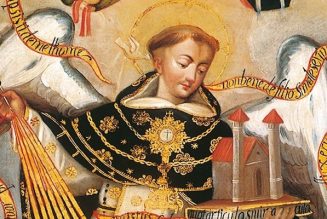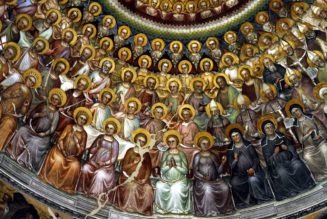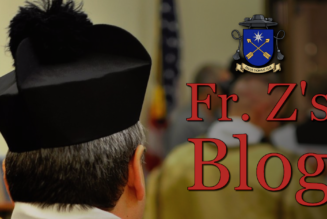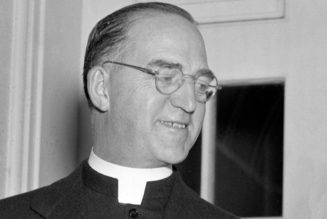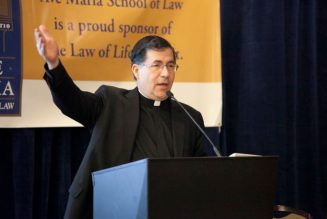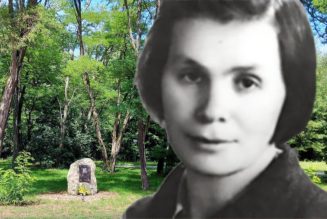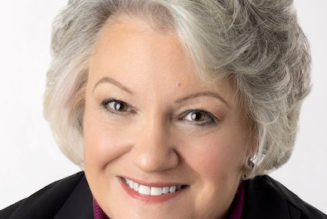Listen to This Op-Ed
Audio Recording by Audm
To hear more audio stories from publishers like The New York Times, download Audm for iPhone or Android.
A few weeks ago, I dialed into the Eucharist for the first time, praying for spiritual communion as my priest consumed the host in front of the altar. The webcam was clear. The sound quality was top-notch. But the Mass was decidedly old-school.
In the absence of a choir, my church, the Episcopal Church of St. Ignatius of Antioch in New York City, had the organist sing the traditional Mass in Gregorian chant. To follow along with the melody, our priest suggested the Liber Usualis, a book of religious chant music dating back to the 11th century.
This was just one of many remote religious activities I’ve participated in recently. I have also, for example, gathered over Zoom with friends for compline, a nighttime prayer with roots in the medieval monastic tradition. And I’m not alone. One friend has been dialing into Latin Masses at churches across the United States: a Washington Mass at 11 a.m.; a Chicago one at noon.
The coronavirus has led many people to seek solace from and engage more seriously with religion. But these particular expressions of faith, with their anachronistic language and sense of historical pageantry, are part of a wider trend, one that predates the pandemic, and yet which this crisis makes all the clearer.
More and more young Christians, disillusioned by the political binaries, economic uncertainties and spiritual emptiness that have come to define modern America, are finding solace in a decidedly anti-modern vision of faith. As the coronavirus and the subsequent lockdowns throw the failures of the current social order into stark relief, old forms of religiosity offer a glimpse of the transcendent beyond the present.
Many of us call ourselves “Weird Christians,” albeit partly in jest. What we have in common is that we see a return to old-school forms of worship as a way of escaping from the crisis of modernity and the liberal-capitalist faith in individualism.
Weird Christians reject as overly accommodationist those churches, primarily mainline Protestant denominations like Episcopalianism and Lutheranism, that have watered down the stranger and more supernatural elements of the faith (like miracles, say, or the literal resurrection of Jesus Christ). But they reject, too, the fusion of ethnonationalism, unfettered capitalism and Republican Party politics that has come to define the modern white evangelical movement.

They are finding that ancient theology can better answer contemporary problems than any of the modern secular world’s solutions.
In so doing, these Weird Christians are breaking with the rest of their generation.
Today’s millennials and Gen Zers, after all, are growing up in a world in which a secular culture is the default. Nearly every major branch of American Christianity is in demographic decline.
Just 43 percent of American adults call themselves Protestants, down from 51 percent 13 years ago, according to a Pew Research Center survey. The percentage of American Catholics also dropped four points, to 20 percent. According to the last expansive study, in 2014, a third of millennials now identify as “religiously unaffiliated,” as do about a quarter of American adults over all, up from 16 percent in 2007. Almost one in five Americans was raised in a religion only to leave it to join the ranks of the “Nones.”
Even among Americans who say that they belong to a religious tradition, relatively few regularly practice their faith. Less than 40 percent of self-professed Catholics, and a third of mainline Protestants, attended services weekly (back in the pre-virus days when doing so was possible). Only 22 percent of American weddings are held in houses of worship, down from 41 percent in 2009.
Even Americans who do believe in a higher power are less likely than ever to adhere to dogma. The traditional elements of shared religious life — community, ritual, a sense of purpose — have increasingly come “unbundled” from one another, in the words of the Harvard Divinity School scholars Casper ter Kuile, Angela Thurston and Sue Phillips. A religiously unaffiliated American might get a sense of communal identity from CrossFit, say, or meditate or read tarot cards to get in touch with a sense of the transcendent.
For better and for worse, Christianity is no longer the American default. Flexible “Christmas and Easter” Christians, and those for whom religion is a primarily social or communal affair, now have a panoply of less-demanding options. The totalizing demands of a faith like Christianity — from its radical rejection of earthly power and success to its condemnation of premarital sex — are becoming appealing only to those who want something totally demanding in the first place.
Weird Christianity is equal parts traditionalism and, well, punk: Christianity as transgressive alternative to contemporary secular capitalist culture. Like punk, Weird Christianity has its own, clearly defined aesthetic. Many Weird Christians across the denominational and political spectrum express fondness for older, more liturgically elaborate practices — like the Episcopal Rite I, a form of worship that draws on Elizabethan-era language, say, or the Latin Mass, or the wearing of veils to church.
The ranks of self-described Weird Christians are small — and largely limited to the internet — but evidence suggests that there may be more interest in the aesthetics of traditionalist Christianity than you might think.
For example, while American Catholics are in slow decline, attendance at parishes that celebrate the Latin Mass is on the rise. Some have doubled weekly membership in the past few years. Even some evangelical churches — long suspicious of the “smells and bells” of high church practice — are embracing liturgy. The nondenominational New Life Church in Colorado Springs, for example, which has hosted prosperity-gospel preachers, was, in pre-pandemic times, concluding some of its services with an Anglican hymn to the Trinity known as a doxology.
One Weird Christian is Ben Crosby, an Episcopalian seminarian who is using Google Hangouts to pray the Office of the Dead, a relatively uncommon prayer from the Anglican Breviary. Mr. Crosby, a student at Yale Divinity School, came to the faith partly through being moved by its otherworldly aesthetics. Raised Lutheran, he was unprepared for what he found as a first-year undergraduate at Yale in 2009 when he attended an Anglo-Catholic parish. “I walked into a service and it’s a big, beautiful, 19th-century neo-Gothic nave, clouds of incense wafting up toward the ceiling, candles everywhere,” Mr. Crosby told me. “It was like nothing I’d experienced before.”
Likewise for Rod Dreher, a senior editor and blogger for The American Conservative magazine and the author of “The Benedict Option,” a best-selling 2017 book that argues that Christians should abandon the culture wars and focus on living in intentional, godly communities. Aesthetics were a powerful first step toward his conversion — first to Catholicism, then to the Orthodox Church.
“As a teenager in the 1980s, I thought Christianity was either the boring middle class at prayer, or it was Jimmy Swaggart’s hellfire Pentecostalism,” Mr. Dreher told me. “Neither one spoke to me.”
But when he was 17, he told me, he visited Chartres Cathedral while on a group tour of France and he found himself moved by the majesty of the Gothic architecture. “I think this is why a certain kind of person really is drawn to the older, ritualistic, aesthetic forms of Christian worship,” he said. “It speaks to something deep inside us, and, I think, it is a kind of rebellion against the ugliness and barrenness of modernity.”
Modern America’s loose approach to spirituality is what attracts many Weird Christians to a more demanding conception of faith. At the same time, however, it’s precisely the technological innovations of modern American culture — including that zenith of spirituality, Twitter — that make finding their spiritual tribe possible.
Social media platforms, with their millions of users and algorithms designed to expose users to like-minded individuals, are fertile soil for communities like Weird Catholic Twitter, a loose umbrella term for a few hundred mostly millennial, extremely online Catholics. (There are smaller Anglican and Orthodox equivalents.)
John Garry, a 22-year-old junior at Manhattan College, returned to Christianity in part thanks to Weird Catholic Twitter. Raised as a “standard suburban upper-middle-class” Catholic, he had gone to Catholic school, where he had been exposed to a Christianity that he felt was simplistic, full of dumbed-down doctrine and “pitched far below what most people my age were capable of thinking about.”
He left the church in eighth grade, only for other ideologies to capture his attention. He got into Marxism for a while. Then, in the lead-up to the 2016 election, he had a brief flirtation with far-right politics, doing work for Breitbart. During that time, he followed a reactionary Catholic account. Which brought him, in turn, to Weird Catholic Twitter.
Weird Catholic Twitter, he told me, was “different from both the sort of alt-right world and the middle-class, typically American world I’d grown up in.” It was a community that wasn’t only “radically accepting,” but also focused on something “beautiful and transcendent.” It was a community, he said, where people weren’t only good to one another, but also deeply invested in helping make one another better.
He soon left behind the right-wing world he now describes as “repugnant,” and became both a renewed Catholic, and an established member of the Weird Catholic online ecosystem, under the name “MechaBonald” (a reference to a 19th-century French counterrevolutionary). And while he once again describes his politics as Marxist, he sees them as rooted specifically in a vision of Christianity at “variance with the entire modern liberal capitalist system.”
This sense of rebellion — of consciously being at variance with modernity — permeates Weird Christian politics no less than its aesthetics.
Traditionalist Christianity has long been common in far-right and reactionary circles, where many see it as a bulwark against the forces of modern political correctness and liberal sexual morality. Last year, for example, Daryush Valizadeh, the alt-right former pickup artist better known as Roosh V, announced that he had returned to his childhood Armenian Apostolic Orthodox faith and was banning all talk of premarital sex on his websites. (He continues to attack feminism and L.G.B.T.Q. people, but now he does it from a Christian perspective, concluding that “modern life is AIDS.”)
The Latin phrase “Deus vult” — “God wills it,” a reference to Pope Urban II’s call to arms in the First Crusade — has become a popular dog whistle for Islamophobia among the online alt-right. (Even the far-right shock jock Milo Yiannopoulos recorded a gospel single in early 2019.) For these adherents, Christianity is a kind of spiritualized trolling of the modern world that gives them a vehicle to promote a particular vision — usually white, usually Western — of pre-modernity.
As in any online space, reactionaries have made their presence felt in online Christian communities. But for plenty of Weird Christians, their faith is a call to a far more progressive politics. Like their reactionary counterparts, they see Christianity as a bulwark against the worst of modernity, but they are more likely to associate modernity’s ills with the excesses of capitalism or with a transactional culture that reduces human beings to budget line items, or anonymous figures on a dating app.
Leah Libresco Sargeant, a Catholic convert and writer who describes her views as roughly in line with that of the American Solidarity Party, which combines a focus on economic and social justice with opposition to abortion, capital punishment and euthanasia, rejects capitalist notions of human freedom.
“The idea of the individual as the basic unit of society, that people are best understood by thinking about them as sole lone beings” is fundamentally misguided, she told me. “It doesn’t make enough space to talk about human weakness and dependence” — conversations that she believes are an integral part of Christianity, with its concern for human life from conception until death.
Weird Christianity represents an alternative to “both more liberal and conservative forms of American Christianity,” said Mr. Crosby, the seminarian. While he acknowledges he’s more intuitively in line with the progressive left — he worked as a union organizer after college — his time in the labor movement left him disillusioned with a purely political solution. “We’re not going to save ourselves,” he said. God will.
This approach to Christianity may not look or sound like the one most commonly represented in the mainstream media — which tends to focus on either politically conservative white evangelicalism or its more anodyne mainline equivalent. But it’s likely to reflect Christianity’s only viable future in a secular age: as a spiritually saturated rejection of the American political binary and the limited possibilities of a culture that denies transcendence.
Christianity, after all, has been most successful when it’s most demanding. A 2016 Pew Research Center study found that children raised in households without a single tethering faith identity — either households where religion was rarely talked about, or interfaith households in which multiple religions were presented as potential family options — were significantly more likely to leave organized religion altogether than their more orthodox counterparts.
In the age of lockdown, when so much of life exists in a nebulous digital space, a return to the Christianity of the Middle Ages — albeit one mediated through our screens — feels welcome. When my husband and I lit a candle just after midnight on Easter morning to sing the rejoicing song known as the Exsultet (“This is the night that with a pillar of fire banished the darkness of sin”) as ambulance sirens droned outside our Upper Manhattan window, the words were all the more potent because of their history.
We were singing the same song of promise sung by so many other worshipers at so many epochs of desolation. When we turned on our web camera to attend Evening Prayer with our priest — complete with the recitation of the Magnificat, a devotional song of Mary — we were not only taking the time to greet our fellow parish members, but also to experience solidarity with a church that transcended time itself. Holed up in an apartment we have hardly left for weeks, we were experiencing both communal connection and a sense that this ghastly, earthly present is not all there is.
The Weird Christian movement, loose and fledgling though it is, isn’t just about its punk-traditionalist aesthetic, a valorization of a half-imagined past. It is at its most potent when it challenges the present, and reimagines the future. Its adherents are, like so many young Americans of all religious persuasions, characterized by their hunger for something more than contemporary American culture can offer, something transcendent, politically meaningful, personally challenging. Like the hipster obsession with “authenticity” that marked the mid-2010s, the rise of Weird Christianity reflects America’s unfulfilled desire for, well, something real.
It is unclear what the world will look like when the coronavirus pandemic, at last, comes to an end. But for these Weird Christians, this crisis doubles as a call to action. For Mr. Garry, the former Breitbart contributor, it has made plain “the absolute dearth of mutual aid in America.” Christianity, he told me, “compels us not just to take care of people around us but to seek to further integrate our lives and fortunes into those of the people around us, a sort of solidarity that necessarily entails creating these organizations to help each other.”
Mr. Crosby agrees. The pandemic, he said, has made all too clear that both liberal and conservative visions of American life, based on “self-fulfillment via liberation to pursue one’s desires” is not enough. “It turns out we need each other,” he said, “and need each other dearly.”
What Christianity offers, he added, is “a version of our common life more robust than individual pursuit of desire-fulfillment or profit.” In the light of that vision, the current pandemic can “be both a cross to bear and an opportunity to reflect the love that was first shown us in Christ.”
Tara Isabella Burton, a contributing editor at The American Interest and a columnist at Religion News Service, is the author of the forthcoming “Strange Rites: New Religions for a Godless World.”
The Times is committed to publishing a diversity of letters to the editor. We’d like to hear what you think about this or any of our articles. Here are some tips. And here’s our email: letters@nytimes.com.
Follow The New York Times Opinion section on Facebook, Twitter (@NYTopinion) and Instagram.

